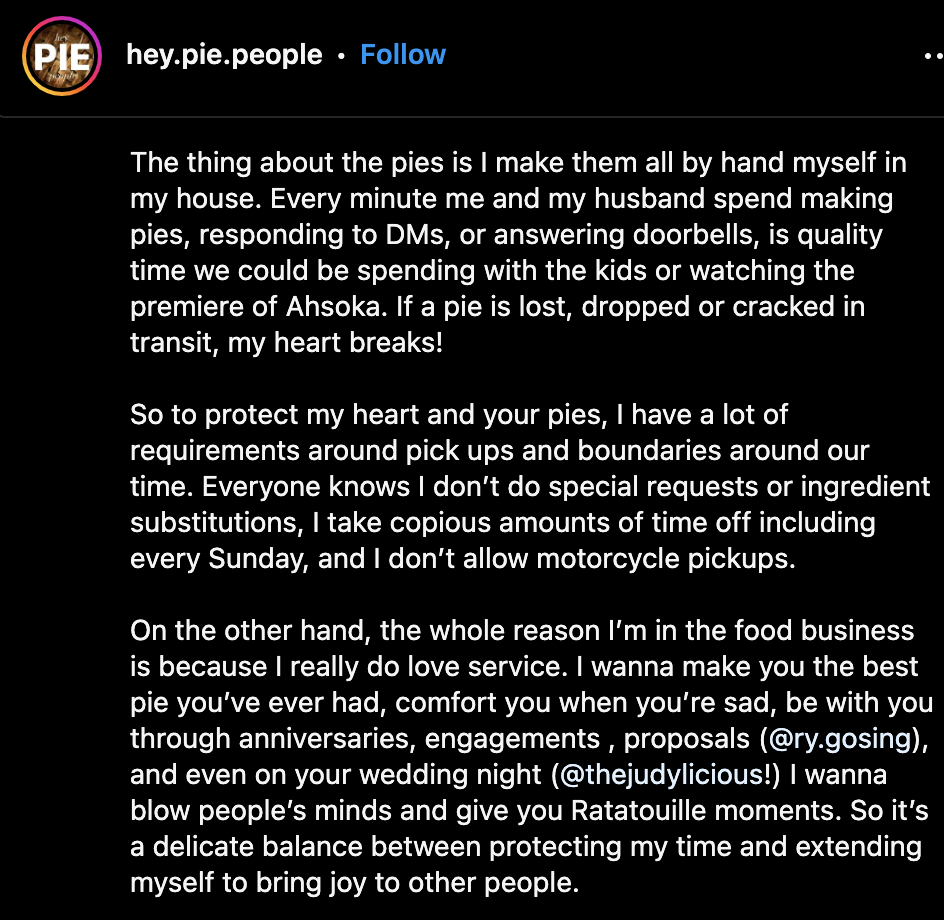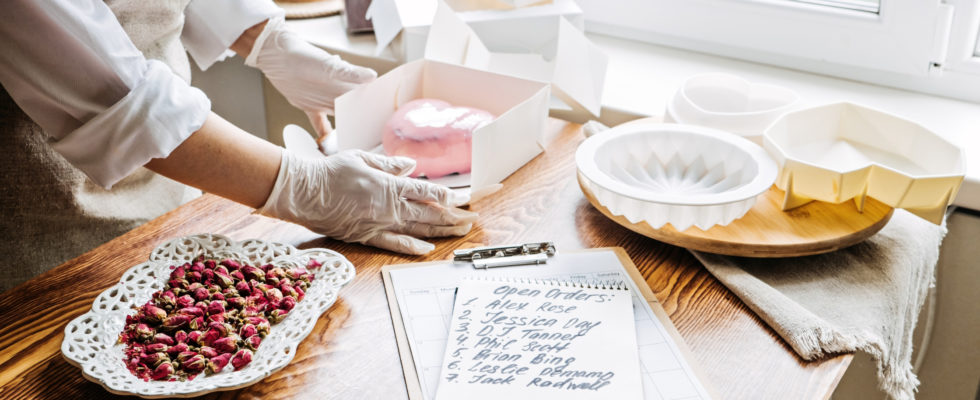The ‘Ber’ months in the Philippines bring us home bakers plenty of orders. And because of this, you’re probably wondering how to transport your baked goods safely to keep your customers happy and get good reviews.
Well, I can totally relate! I can’t count the number of times I’ve had customers call me, disappointed about how their ordered baked goods arrived. It’s definitely not a pleasant experience, just like how one Bailiwicker showed in the TBA Student Lounge.

She ended up having to create another cake just to make the customer happy—at her expense, even if it wasn’t her fault. This is what we all want to avoid, agree?
If you’re looking for solutions on how to transport baked goods without them arriving disassembled in disarray, especially during this holiday season, keep reading. I’ll talk about tips for transporting desserts.
Ready to start? Let’s get to it!
*Note: This was originally written last December 12, 2020. It has been updated today, October 3, 2023.
How To Transport Your Baked Goods Safely: Things To Remember
For your baked goods, reaching their destination securely and intact means you’ll have to ensure the following:
Pick the Right Boxes or Containers
Whether you’re transporting banana bread or bundt cakes, picking the right treat box or container is very important. Use strong boxes or containers that are made for carrying food. This stops the food from moving around and ensures food safety.
Also, use wax or parchment paper to stop food from sticking and soft materials like bubble wrap to protect the fragile ones.
One more tip: don’t assume that a solution for one type of food will serve for other types. After all, how to transport freshly baked bread might differ from cakes with buttercream frosting, which likely require more care. Research what you should do to ensure transportation success.
If you’re looking for boxes, containers, wax papers, etc., check out the TBA Shop!
Consider Delivery Times
If your customer ordered something that, say, required you to do plenty of cake decorating, you want to make sure they get the order as soon as possible to prevent any damage that might happen. Therefore, especially in the Philippines, it’s probably best to have it delivered when it’s not traffic. That way, your cake will be in your client’s hands quicker—and you’ll have less stress to think about!
The temperature is also important when it comes to delivery times. For instance, some foods like chocolate can melt, and foods with cream can go bad if they get too warm. Again, that means the food should arrive at your client’s location as quickly as possible, which means delivering it at unusual hours if possible.
However, if it’s not, don’t forget to provide bags or coolers that can keep the food cool and, if needed, use ice packs to keep everything at the right temperature while the item is being delivered.
Place Foods Carefully in the Box or Container
When you transport desserts, keep in mind that how you place the food is important. Put the heavier ones at the bottom and the lighter, fragile ones on top. Don’t put too much in one box; leave space between foods so they don’t touch and ruin each other.
When you’re done packing, make sure your treat boxes or storage containers are closed tightly so nothing spills or gets dirty. Secure them with straps, mats, or even plastic wrap to keep everything in place.
That’s how to safely ship baked goods!
Take A Picture Of Your Item Before Having It Delivered
The best way to show to your client that you took extra care with transporting your baked goods is to take photos or even videos. That way, you have proof and a way to protect yourself in case you do run into a difficult client.
Do One Last Check
Before doing the final step of transporting baked goods, check everything one more time. Ensure all the food is packed tightly and you have the correct contact details. Let your customers know when you will arrive as well so they can be ready to get their orders.
How To Transport Your Baked Goods Safely: Have Customers Pick Up Their Order
Honestly, based on experience, getting your customer to come over and pick up their order is the best way for transporting baked goods. Why?
When customers pick up their orders, several potential problems are eliminated:
- Transit Damage: The risk of damaged or squished baked goods during delivery is removed. Customers can ensure that the products are handled to their own satisfaction during transport.
- Loss of Freshness: Without the potential delays of delivery routes, goods can be enjoyed at their freshest soon after they come out of the oven. Customers can also come with their own precautions when it comes to temperature-sensitive baked goods.
- Additional Costs: If customers pick up their orders, you’ll likely see fewer protests for delivery fees.
- Responsibility: Any potential mishaps during transportation, once the goods have been handed over, are no longer your responsibility. Just provide them with precautions and even the best roads to take on the way to you, and you don’t have to think about them afterwards.
So, encouraging customer pickups, when feasible, can be a win-win for both you and your customer in terms of product quality, cost, and overall experience. But what if your customer really can’t come over, and they’ll have to have your item delivered to them?
How To Transport Your Baked Goods Safely: Delivery Options
Thankfully, in the Philippines, there are plenty of ways for you to get your order to your clients. However, not all of them will ensure that your baked goods will arrive intact!
Let’s take a look at each one.
Bicycle
Getting your item delivered via bicycle means that your delivery fee will likely be cheaper. After all, a bike requires no fuel to run. Cyclists can also access paths or roads where cars will not necessarily fit, meaning there’s a possibility that your order will arrive sooner.
However, one thing to note is that bikes cannot necessarily go far. Bike deliveries are also affected by the weather. If it’s raining hard, bikers will likely stop and wait for the weather to improve.
Also, bikers can’t carry a lot. And because bikes can hit bumps, you need to pack your items really well so they don’t get damaged.
In short, if you want to make sure you don’t end up like this meme of Wadough’s:

Do not get bike deliveries for transporting cupcakes or other items that can be damaged due to movement.
Motorcycle
This delivery method is super popular—we’ve got many apps just for it. What’s good and bad about it?
Well, let’s look at the good first. Like bicycles, motorcycles can move quickly through traffic and tight spots, so deliveries arrive quicker. However, motorcycles or scooters can travel further than bikes.
Motorcycle deliveries are also affordable, making it great for small businesses. Plus, because it’s app-based, you can see where your delivery is.
Of course, motorcycles are not the sturdiest way to move things. They’re great if you’re thinking of how to transport freshly baked bread. But for delicate stuff like cakes (even if they’re in cake boxes) and pies, not so much.
Popular pie maker Hey Pie has even cautioned people from booking delivery of their orders via motorcycles:

In short, if you’re going to go with a motorcycle, consider the nature of your baked goods and prioritize their safety. After all, a happy customer is one who receives their order in perfect shape.
Car
Using a car to transport your baked goods is a top choice. Cars can cover longer distances than bicycles or scooters, allowing you to deliver more substantial and numerous orders simultaneously. Weather, like mild or moderate rain, doesn’t affect car deliveries much, making it a reliable option in unpredictable conditions.
Plus, cars provide the sturdiest and safest method for fragile items like cakes in cake containers.
However, there’s a catch. Car deliveries are generally more expensive and can be slowed down by traffic, leading to potential delays. So, while it offers many benefits, it’s essential to consider the costs and potential time factors.
Which one should you book?
You have to decide: save money or make sure your goods arrive perfectly? Maybe spend more for better service?
It’s up to you. Everyone’s products and needs are different. Knowing what’s special about your baked goods will help you choose the best delivery way.
Conclusion
Considering how to transport your baked goods safely can be tricky, especially during busy months. You can use bikes, motorcycles, or cars, but each has its own good and bad sides. Sometimes, having your customer come and pick up their order is the best way.
No matter what you choose, always make sure your baked goods are packed safely. This will keep your customers happy and coming back for more. Good luck with all your deliveries this season!
And of course, for the best baked goods you can give to your clients, sign up at The Bailiwick Academy! See you in one of our classes!
—
Keep coming back to The Bailiwick Academy blog for more baking and cooking tips, kitchen tricks, and much more!


Pingback: How Can I Manage My Time Better? - The Bailiwick Academy
Pingback: Different Kinds of Pizzas to Make: They're Must-Tries! - Online Baking and Cooking Classes - The Bailiwick Academy